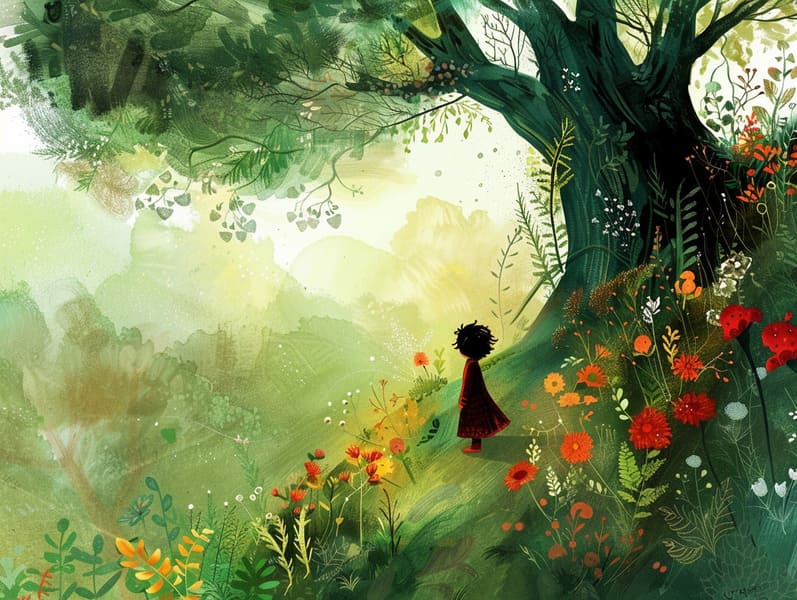The Start of Legendary Fairy Tales and the Unending Appeal.
The Start of Legendary Fairy Tales and the Unending Appeal.
Blog Article

Traditional fairy tales have long histories. These stories have been transmitted from one generation to the next centuries before they were ever inscribed. They arose from a variety of societies, including Eastern traditions. They were initially narrated among older generations, often carrying themes and messages mirroring the societal norms and beliefs of the time.
The Brothers Grimm, Jacob and Wilhelm Grimm, were among the first to collect many of these beloved fairy tales. Their published works, "Grimm's Fables," included narratives like "Ashenputtel," "The Bread Crumb Trail," and "Little Snow White," which have since become mainstays in the world of beloved fairy tales. Similarly, H. C. Andersen's whimsical tales, such as "The Mermaid," and "The Little Duckling," have captured hearts worldwide, securing their place in the pantheon of iconic fairy tales.
Despite their historical roots, these tales remain as significant as ever, especially as children's bedtime stories. These charming stories are now available in different formats, including artistically illustrated books, magical animations, and digital fairy tales.
Their lasting appeal can be connected to several delightful features:
Important Morals: Classic fairy tales often share important moral lessons. Stories like "The Tale of the Boy Who Cried Wolf" teach the importance of being truthful, while "The Story of the Tortoise and the Hare" illustrate the traits of perseverance and modesty. These narratives offer the young clear distinctions between correct and incorrect, developing their moral compass in a kind yet lasting way.
Compassion and Knowledge: Timeless fairy tales frequently showcase beings facing tests and troubles, inspiring young listeners to feel with their struggles and boost their triumphs. For instance, "Beauty and the Beast" conveys the importance of seeing beyond looks to acknowledge the real person of a individual, encouraging warmth and insight.
Cultural Knowledge: Many timeless fairy tales are steeped in the cultural contexts from which they emerged. Exploring these stories can provide intriguing perspectives into different societies, strengthening a sense of global understanding and knowledge.
Fantasy and Imagination: The supernatural elements in old fairy tales—magical beings—foster children’s innovative ideas. These fairy tales transport readers to extraordinary realms, enhancing inventive ideas and a sense of astonishment that endures a lifetime.
Traditional fairy tales are not only alluring but also pedagogical. They act as spellbinding tools in fostering various thinking and feeling skills in little ones. When classic fairy tales are voiced, they improve language proficiency by showing new lexicon and complex sentence structures. This practice also promotes auditory perception and attention span, as young readers remain attentive, expectant to see what happens next.
Furthermore, conversing about the themes and characters of timeless fairy tales can enhance analytical skills and intellectual skills. Young ones learn to detect patterns, guess what will happen, and figure out cause and effect. These reflections also further the young articulate their thoughts and feelings, nurturing their emotional intelligence.
In today’s digital website era, the availability of digital fairy tales has made these tales more acquirable than ever. Online resources and applications feature wide arrays of Grimm's fairy tales that can be explored or heard anytime, anywhere. Fairy tales read out loud are particularly well-liked, giving an delightful method for children to enjoy these delightful tales. Spoken stories and read-out-loud stories move characters and settings to life, often supported by fantastical soundtracks and harmonies that raise the narrative adventure.
The timeless charm of classic fairy tales lies in their ability to alter to current times while keeping hold of their essential themes. Contemporary retellings of these fairy tales often spotlight more multicultural figures and modern settings, making them pertinent to today’s audience. However, the essential messages of spirit, sympathy, and truth remain unchanged, continuing to strike a chord with young readers of all ages.
Traditional fairy tales also offer a sense of peace and homeliness. They render accessible a well-arranged narrative with a evident beginning, middle, and end, often wrapping up with the ending of conflicts and the triumph of morality over wickedness. This constancy can be solacing for kids, imparting a sense of reliability in an dynamic world.
Old fairy tales continue to captivate and inform new generations, maintaining their wonder and meaningfulness in modern society. As nighttime stories for kids, they furnish a perfect blend of fascination and comprehension, fostering moral values, empathy, and creativity. The proliferation of web-based fairy tales and the sought after status of fairy tales told out loud guarantee that these old tales remain available to new generations.
By guarding and distributing these stories, we continue to esteem the rich tapestry of storytelling and cultural heritage. Whether you are seeing a beautifully illustrated book, accessing a online collection, or listening through an read-aloud story, the splendor of traditional fairy tales is always within reach. These narratives emphasize of the everlasting effect of fairy tales and its ability to bind us across epochs and places.
No matter if you are viewing a vibrantly illustrated book, perusing a cyber collection, or listening on an audiobook, the splendor of classic fairy tales is always within reach.
These stories convey of the immortal effect of tales and its ability to tie us across time and space, forming a connection that fascinates and enlightens alike.